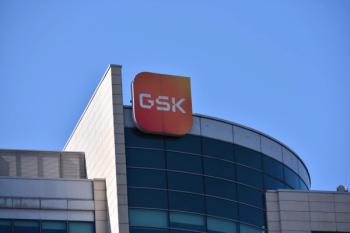
- BioPharm International-04-02-2007
- Volume 2007 Supplement
- Issue 2
The Importance of Project Management
Are the deadlines for your outsourced projects often not met? Are you unsure of the status of your project at any given time? Is the original budget of your study typically exceeded?
Are the deadlines for your outsourced projects often not met? Are you unsure of the status of your project at any given time? Is the original budget of your study typically exceeded?
If most of these questions have an affirmative response, chances are your outsourced program needs more effective project management. Project management helps prevent these problems by organizing and managing resources to ensure that project deliverables are completed on time, within budget, and that they are of high quality.
Proactive project management is especially critical for outsourced biopharmaceutical projects, which often involve a small biotech company that may be dealing with multiple contractors. The nature of biopharmaceutical products, with their molecular and structural complexity, inherent instability, and sensitivity to manufacturing changes, can present numerous analytical challenges. Biopharmaceutical testing methods are often technique-dependent, highly product-specific, and sometimes not very robust and reproducible. Understanding and anticipating problems early can prevent major delays and budget overruns later.
Smaller biotech companies may rely on a contract organization for regulatory and technical guidance—the contractor may recommend the most efficient methods for supporting the company's analytical needs. This fosters a solid partnership, which, of course, is facilitated by effective project management.
A biopharmaceutical study outsourced to an analytical contract laboratory may consist of multiple tasks, including method development and validation; method transfer; characterization of active pharmaceutical ingredient (API) and drug product (DP); stability and release testing; and testing support for formulation and process development. There are several uncertainties about analytical methods, formulation, the API and DP, and the manufacturing process. These unknowns create challenges in defining the contract laboratory's scope of work, timelines, budgets, and ability to meet original goals.
Role of a Project Manager
The primary function of the project manager is to coordinate all project-related activities and to monitor progress of the agreed-upon work, timelines, and costs. Before initiating the study, the project manager works closely with the client to prepare a project plan outlining critical paths and milestones and determining the budget. Throughout the study, the project manager reports the status of each task, changes in scope, and potential risk of not meeting targeted timelines and budgets. This person often becomes the primary point of communication between the client and the contract laboratory, facilitating the flow of information between the two parties. The person in this position should proactively assess and evaluate resource allocation, execution of project tasks, and timelines for deliverables. He or she also drives implementation of contingency plans and problem solutions, and is empowered to motivate and influence the project team to achieve the program's overall goals. The term "project manager" often becomes synonymous with project champion, project coordinator, project advocate, or project leader.
Definition and the Bidding Process
Project management starts when a contract laboratory responds to a Request for Proposal (RFP) for a study to be outsourced. It is one of the most crucial steps in managing the relationship between the client and the contract laboratory, because the project is defined, timelines and budgets are set, and the expectations of both parties are established.
A contract laboratory pitfall is failing to carefully assess internal capacity or capability to perform the study before committing. The project must devote enough time and attention to the project definition stage to fully understand the scope and extent of the work. One or more project definition meetings (Table 1a) should take place to discuss the objectives of the study, background of the drug development program, technical information, specialized equipment or expertise needed, and other project requirements.
Table 1a. Project management communication summary
Also helpful is a checklist outlining key pieces of information needed to determine pricing, timing, and resource requirements. The contract laboratory's bid (proposal) should indicate explicitly what is, and is not, included in the fee, and assumptions should be stated clearly in the contract to clarify terms and conditions. For example, if a start date is agreed upon, one key assumption is, "initiation of the study is contingent upon receipt of samples and standards and approval of the protocol by the client." Assumptions are also essential to include in the bid when the responses to certain key questions in the project definition form are unavailable or not provided. Ideally, the project manager is engaged as early as possible in the bid preparation process, because the contract serves as the foundation for developing the project and resource plans.
The Project Team and Resource Management
Assembling a project team for an outsourced biopharmaceutical study occurs early in the project, even before presenting a bid to the client. In order to commit to taking on a study, the contract laboratory must have formulated a resource plan. In determining the resource requirements for the study, the project manager, along with the operational leaders, should consider the following:
- Experience, expertise, and training of the staff based on the techniques, methods, and compound(s) involved
- Previous experience of the staff in working with the same client
- Support functions such as quality assurance, technical writing, sample management, and stability storage
- Availability of staff and equipment based on approximate time frame
- Back-up staff in case of vacation, illness, or other unexpected events
- Back-up equipment in case of downtime.
It is in the best interests of the client and the contract laboratory to maintain a dedicated team for the project. This establishes "ownership" and accountability. It also promotes consistency in the results. Throughout the study, the project manager monitors the use of resources against project timelines, budgets, and study requirements, and recommends necessary adjustments to resources and timelines.
Project Communication Tools
Several avenues of communication should remain open during the lifetime of the program to guarantee an effective relationship between a contract laboratory and its client. Meetings, as summarized in Tables 1a and 1b, are essential to accomplish project management objectives. Aside from the project definition meeting, project initiation or kick-off meetings, both with the client and within the contract laboratory team, are critical tools for project management communication. Equally important during these meetings is establishing roles and responsibilities of project team members, lines of communication, guidelines for escalating issues when needed, and ways to handle investigations and deviations, as well as changes in project scope, timelines, and budgets.
Table 1b. Project management communication summary
Communication at the contract laboratory during the method transfer or method evaluation stage is crucial. Often, test methods for biopharmaceutical products are initially developed by the client or at a contract manufacturing facility. The sponsor should be certain to communicate all relevant information about the history of the methods, steps that are technique-specific, and other methods that were evaluated or that the sponsor attempted to develop (whether successful or not). Challenges in robustness and reproducibility of biopharmaceutical techniques are often encountered when methods are transferred from one laboratory to the other. Sharing relevant information through project management communication tools ensures seamless and efficient method transfer.
To keep the communication lines open among all parties while the study is in progress, the project manager should provide status updates to the client on a regular basis, containing the following information:
- Technical data
- Data analyses
- Data interpretation and conclusions
- Technical issues
- Future experiments
- Status of project tasks and activities
- Timelines against goals
- Costs against budget
Contract laboratories should make available a brief written summary report available before project update meetings or conference calls. These events are interactive, with ideas exchanged and decisions made by the client and contract laboratory. They are especially useful for method development, transfer, and validation activities. For larger studies, a more formal review of the entire program, typically on a quarterly or biannual basis, is recommended. This enables both parties to take a step back and look at the "big picture" of which areas are working well and which need improvement. They can then evaluate performance metrics (such as turnaround time, timelines and budgets versus goals, and quality metrics), recommend systems and process improvements, and discuss the future of the program.
After completing the outsourced study, assessments of the contract laboratory's overall performance and the interactions with client can take place as a "lessons learned" meeting. An evaluation of key performance measures in terms of technical skills, project management, quality, and communication is conducted. The outcome is often communicated to the upper management of both parties in an effort to improve performance of quality systems and processes in both organizations. This feedback helps clients understand what improvements can be made to manage their outsourcing partners more effectively.
It is the project manager's responsibility to coordinate and drive these meetings, act as the meeting facilitator, prepare the meeting agenda, document and distribute meeting minutes, and follow up.
There are a number of commercially available or internally developed customized project management software applications that can be used to organize data for timelines, budgets, and project tasks. The effectiveness of such software depends on its flexibility and suitability to the program and both parties' needs.
Risk Management
Key to the effectiveness of project management is proactively identifying potential impediments to completing the study in a timely and cost-effective manner. A simple technique to aid in this type of risk management is to ask the following sample questions:
- Does the study involve an early phase of drug development?
- Is the drug formulation going to change?
- Is method feasibility or transfer going to be conducted prior to sample analyses?
- Does the laboratory have experience with a similar compound?
- Is the client contact knowledgeable about the analytical portion of the study?
The next steps involve prioritizing the risks in order of probability and magnitude of impact on costs, quality, and timelines, and then formulating a risk management plan. The plan should list strategies to mitigate risks, persons responsible, and timetables for implementation, resources, assumptions made, and ways to measure effectiveness.
Escalation and Resolution of Issues
Every outsourced project has its share of problems and issues. It is wise to devise a plan detailing when and how to escalate an issue to the next level supervisor, technical expert, someone from upper management or quality assurance, or client. Although there are no hard-and-fast rules, the following are some of the warning signs that someone of greater authority or experience should be consulted:
- Timelines are going to be compromised
- Client has started to express concern or dissatisfaction
- Several attempts or approaches at resolving the problem have failed
- Expertise within the team is limited.
The project manager's role is to inform the client of the problem in a timely manner and facilitate the resolution of the issue. Trust and confidence in the contract laboratory's abilities and the nature of the relationship between the client and the contract laboratory can make a major difference in outcome.
A Corrective and Preventive Action (CAPA) plan is an integral part of resolving the problems encountered. The plan identifies root causes and an action plan is designed around systems, processes, and procedural improvements. In addition to the "who," "what," "how," and "when," components of the plan, it also includes a follow-up strategy and ways of measuring and monitoring its own (the CAPA's) impact.
Hypothetical Case Study
The case study below illustrates how project management approaches can lead to a successful outsourced biopharmaceutical program.
The Project
A client decided to outsource a Phase 2 study of a monoclonal antibody. The scope of the work included developing and validating methods for stability, characterization, and release, including reverse-phase HPLC, size-exclusion HPLC, SDS-PAGE, ELISA, isoelectric focusing, Karl Fisher (moisture), and mass spectrometry (Q-ToF) for mass and sequence. Release and stability testing of clinical batches of drug product were to follow.
The timelines for the study were tight because the decision to outsource was made rather late. In order to meet the timelines, the contract laboratory had to assemble an experienced project team to initiate parallel method development efforts. The timing was less than ideal: not only was the contract laboratory given only two weeks lead-time, but it was already working at capacity.
Approach
The division director gathered his management team to discuss resource strategy and how to ensure that the contract laboratory did not over-promise and under-deliver. The group recognized that they needed a skilled project manager and identified one of the project management tools and approaches discussed previously.
As a proactive measure, several discussions occurred between the contract laboratory and the client before committing to the study to ensure that the technical information provided was clear and the scope of work was well understood. Next, the project manager prepared a draft detailed timeline of the project activities with the client-desired completion date as the end goal. Based on this, the number of resources was estimated and scheduled. The plan was provided to the client and approved with some minor modifications.
The strategy was to begin with two to three analysts and then ramp up when additional resources became available. Because assembling a project team composed solely of experienced staff was not possible, an experienced technical manager was assigned to oversee the development efforts and design all studies. The team identified potential risks and the project manager and technical lead devised a risk mitigation plan. Before initiating the laboratory work, they conducted project initiation meetings, both with the client and internal team members. This included members of the dedicated quality assurance audit, and technical writing teams. Throughout the study, the project manager held weekly conference calls to keep both parties informed and engaged in technical issues. Calls covered status of all project tasks, timeline shifts, and budget adjustments. The project manager communicated any critical issue that needed input from the client. These issues were effectively resolved with interactive discussions. Upper management from both parties became involved only when budget adjustments needed approval.
Outcome
The contract laboratory completed development and validation studies for all of the methods in just slightly over one week longer than the original timeline. The budget for method development was adjusted once to slightly increase the "cap" to account for additional development time for the Q-ToF method.
The client was pleased with the management of the project, overall performance of the team, level of communication, and responsiveness of the contract laboratory. As a result, the client has decided to award the contract laboratory another similar program for a second compound in Phase 1.
Magdalena R. Mejillano is the vice president of operations, cGMP laboratory PPD, Inc., 608.203.4027,
Articles in this issue
over 18 years ago
Outsourcing Virtually Everything: Making the Semi-Virtual Model Workover 18 years ago
Outsourcing: What is the Path Forward?over 18 years ago
Match.Contractmanufacturing: Finding The Perfect Matchover 18 years ago
Analytical Testing to Support Biopharmaceutical ProductsNewsletter
Stay at the forefront of biopharmaceutical innovation—subscribe to BioPharm International for expert insights on drug development, manufacturing, compliance, and more.




